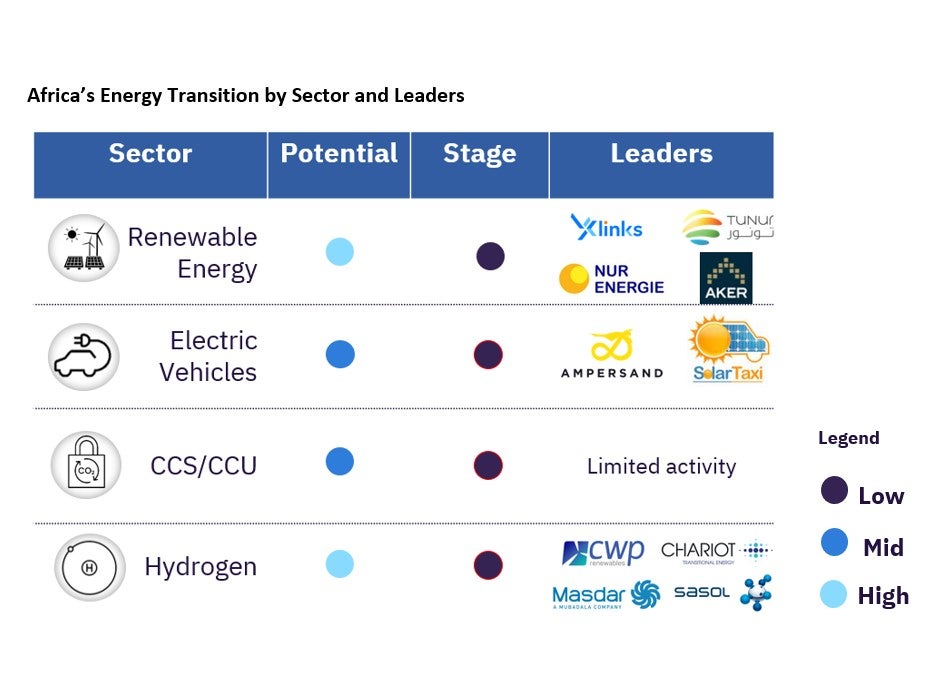
- Energy transition in Africa is unique due to lower levels of energy access and grid reliability in some countries
- While the rollout of renewables may be slower than other regions, solar PV and wind are still expected to see the largest percentage increase in capacity between 2020-2030
- Africa has gained attention as a potential powerhouse for green hydrogen production due to abundant renewable resources and proximity to developing markets in Europe
As population and affluence grow in tandem, energy and sustainability are set to be increasingly important issues. Africa’s power market is currently dominated by traditional fossil fuel sources, while hydropower plays an important role in many countries as well. On a capacity basis, gas makes up the biggest portion of Africa’s power generation fleet, followed by coal, hydropower and oil. Onshore wind and solar PV are expected to make an increasing contribution by 2030, somewhat reducing reliance on coal. However, new oil-fired power plants are expected as well, offsetting emissions reduced from decommissioned coal plants. As the population and affluence grow in tandem, energy and sustainability are set to be increasingly important issues. Between 2020 and 2030, coal is the only technology that is not expected to see an overall increase in capacity. The largest growth of any power generation technology is expected in wind and solar PV, respectively. South Africa and Morocco are among the largest African economies expecting a major buildout of renewables. These countries are already leaders in energy storage on the continent, with several projects in Ghana as well.
The electric mobility landscape in Africa is unique due to low individual car ownership. On top of this, about 50% of vehicles sold in Africa are imported used vehicles, and most of these will remain conventional vehicles in the near to medium term. Additionally, many countries have issues with the reliability of power supply and aim to extend grid access to currently unserved areas, further complicating the rollout of electric vehicles (EVs). Despite these challenges, many countries have begun incentivising the purchase of EVs and demonstration projects are taking place. Two-wheeled vehicles may become an early market segment for EVs, as most of these are purchased new and have smaller batteries.
Africa has gained attention as a potential powerhouse for green hydrogen production due to abundant renewable resources and proximity to major markets. GlobalData expects 1.6 to 2.8 million tons per annum of green hydrogen production on the continent by 2030. No blue hydrogen projects have been announced. In fact, only one carbon capture and storage (CCS) project of any kind is currently proposed, and none are in operation.





